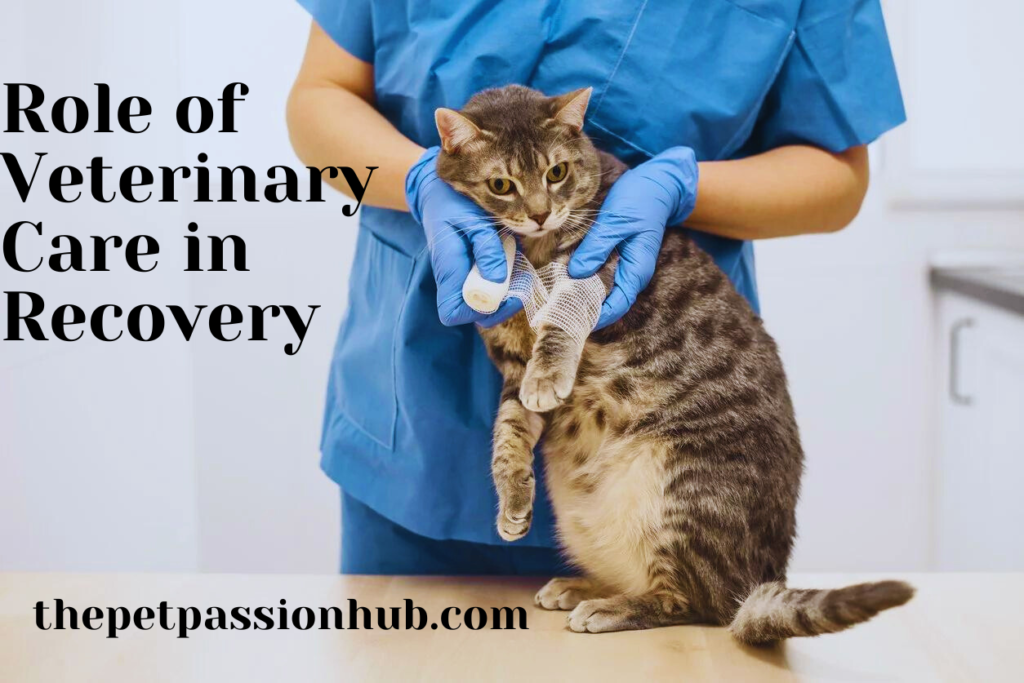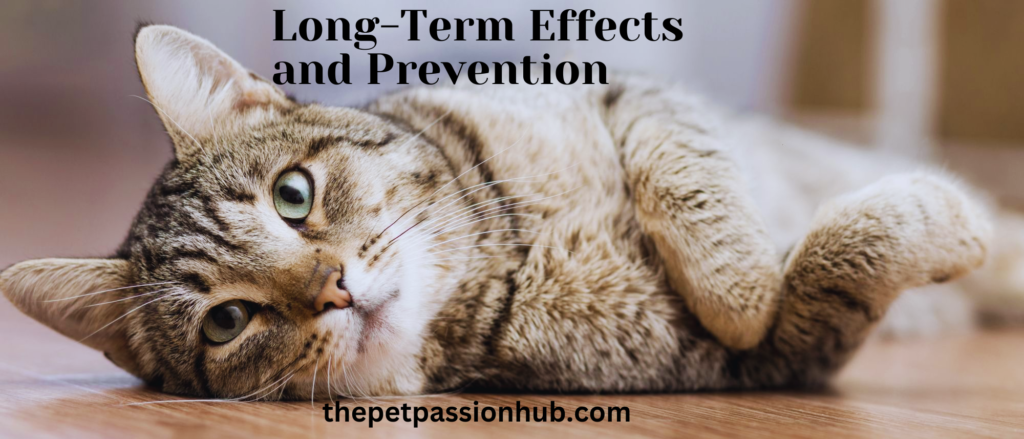Introduction
Cats known for their agility and grace, effortlessly leaping from high places and landing with precision. But what happens when these feline acrobats suffer a broken toe?
The surprising truth is that cats possess an incredible ability to recover from such injuries. Often without the need for invasive treatments or surgical interventions.
Understanding the intricate process of how cats’ broken toes heal can provide valuable insights into their remarkable resilience and adaptability.
Join us on a journey through the hidden world of feline podiatry as we unravel the mysteries behind cats’ broken toes recovery. How Cats’ Broken Toes Recover?
1. Understanding Cat Toe Injuries
Adapting to injury ingrained in a cat’s nature. And their resilience in the face of adversity is nothing short of remarkable.
When a cat sustains an injury such as a broken toe. They display an incredible ability to adapt and continue with their daily activities.
Despite the pain and discomfort, cats often find ways to maneuver around their surroundings without letting the injury hold them back.
One fascinating aspect of a cat’s resilience is their innate ability to hide signs of weakness or pain. This behavior dates back to their days as wild hunters when showing vulnerability could make them easy targets for predators.
As a result, injured cats are known for masking their pain and continuing on as if nothing has changed. This extraordinary display of resilience speaks volumes about the strength and determination inherent in our feline companions.
Cats’ remarkable ability to adapt to injuries like broken toes serves as a powerful reminder of the indomitable spirit that exists within these enigmatic animals.
Their unwavering resolve and refusal to be hindered by physical limitations embody a sense of perseverance that we can all learn from.
It’s truly inspiring to witness how cats navigate through life with grace and fortitude. Setting an example for us all in overcoming challenges with resilience and tenacity. How Cats’ Broken Toes Recover?
Can Cats Sense Your Pain? The Truth About Feline Empathy
2. The Healing Process of Broken Toes
Veterinary care plays a crucial role in the recovery process for cats with broken toes. Beyond simply setting the bone or prescribing pain medication, a skilled veterinarian can provide holistic support to aid in healing.
This may include recommendations for specialized nutrition to support bone health. Guidance on creating an optimal environment for rest and recovery. And identifying potential underlying conditions that could impact the healing process.
Additionally, veterinarians can offer physical therapy options to improve mobility and prevent long-term complications.
Furthermore, veterinary professionals are also equipped to address any psychological impact of injury on the feline patient.
Cats experiencing pain or restricted movement may become anxious or depressed. So providing emotional support and enrichment activities is vital during the recovery period.
By recognizing and addressing these multifaceted aspects of recovery. Veterinary care ensures that cats not only heal physically but also enjoy a smooth transition back to their normal routines.
3. Adapting to the Injury: Cats’ Resilience
Cats are known for their nimble and agile nature, but toe injuries can be quite common among our feline companions.
While seeking veterinary care is always crucial for serious injuries. There are also several natural remedies that can aid in the healing process of cat toe injuries.

One effective remedy is applying natural honey to the affected toe. As its anti-inflammatory and antimicrobial properties can help promote healing and prevent infection.
Additionally, using aloe vera gel on the injured toe can provide soothing relief while also reducing inflammation.
Another surprising remedy for cat toe injuries is using calendula oil. Which has been found to possess healing properties that aid in skin repair and tissue regeneration.
Furthermore, providing your cat with a comfortable space to rest and recover is essential in ensuring a smooth healing process. Creating a stress-free environment will not only benefit your feline friend’s mental wellbeing. But will also support their physical recovery from a toe injury.
By incorporating these natural remedies into your cat’s recovery routine, you can contribute to their overall well-being and comfort while promoting efficient healing of their toe injury.
How to Heal a Cat’s Broken Toe
4. Role of Veterinary Care in Recovery
The long-term effects of a cat’s broken toe can vary depending on the severity of the injury and how it is treated.
In some cases, a poorly healed fracture can lead to arthritis or chronic pain in the affected toe, potentially impacting the cat’s mobility and overall well-being.
However, with proper veterinary care and treatment, including stabilization, rest, and rehabilitation exercises, many cats can recover without significant long-term effects from a broken toe.
Prevention is key when it comes to avoiding injuries that could result in broken toes for our feline friends. Ensuring a safe environment for your cat both indoors and outdoors can significantly reduce the risk of accidents that could lead to fractures.
This includes removing potential hazards such as sharp objects or high places where a cat might fall and injure itself.

Additionally, regular check-ups with your veterinarian can help identify any underlying conditions that may make your cat more susceptible to bone-related injuries.
By being proactive about safety measures and healthcare for our cats, we can play an important role in preventing broken toes and promoting their overall health and well-being.
5. Natural Remedies for Cat Toe Injuries
In conclusion, the remarkable recovery abilities of cats when it comes to broken toes are truly impressive.
Unlike humans, cats have a unique ability to heal without the need for surgical intervention in many cases.
Their natural instincts and biological mechanisms work together to promote healing, allowing them to adapt and continue their normal activities relatively quickly.
Additionally, their resilience and stoic nature play a significant role in their recovery process.
Cats have evolved with a high pain threshold and an instinctive drive to hide signs of weakness, which contributes to their remarkable ability to bounce back from injuries such as broken toes.
Understanding and appreciating these inherent traits can offer valuable insights into caring for our feline companions when they experience such injuries.
6. Long-Term Effects and Prevention
When it comes to the long-term effects of cat foot injuries, prevention is key. Once a cat has experienced a broken toe or other foot injury, it’s crucial to take steps to prevent future incidents.
This can include providing soft and supportive bedding, keeping hazardous materials out of reach, and ensuring safe play areas for the feline friend.

Additionally, regular check-ups with a veterinarian can help monitor the healing process and catch any potential issues early on.
Prevention also extends to understanding how these injuries occur in the first place. By being aware of factors such as slippery surfaces, sharp objects, or excessive jumping from high places, cat owners can take proactive measures to minimize risk.
Education and awareness are paramount in preventing long-term effects of cat foot injuries and promoting a healthy recovery for our beloved pets.
7. Conclusion: Cats’ Remarkable Recovery Abilities
In conclusion, the remarkable recovery abilities of cats when it comes to paw injuries are truly awe-inspiring. How Cats’ Broken Toes Recover?
Despite the delicacy and complexity of their paws, cats have shown an innate ability to heal rapidly and effectively from various injuries, including broken toes.
Their instinctual grooming behavior plays a key role in keeping the affected area clean and promoting circulation, which ultimately accelerates the healing process.
Furthermore, recent studies have shed light on the regenerative capabilities of feline stem cells, which contribute to their impressive recovery from injuries.
These findings suggest that there may be potential for new treatments or therapies inspired by cats’ natural healing mechanisms.
As we continue to unravel the mysteries of feline recovery abilities, it’s clear that cats are not only enigmatic companions but also fascinating subjects for medical research and innovation in veterinary care.
FAQs
- How do cats break their toes?
Cats can break their toes through accidents, falls, or getting their paw caught in something. - How Cats’ Broken Toes Recover?
In some cases, a cat’s broken toe may heal on its own with rest and limited activity. - What are the signs of a broken toe in a cat?
Limping, swelling, and reluctance to put weight on the affected paw are common signs of a broken toe in a cat. - Can cats still walk with a broken toe?
Cats may still be able to walk with a broken toe, but they will likely limp and show signs of discomfort. - How long does it take for a cat’s broken toe to heal?
The healing time for a cat’s broken toe can vary, but typically takes several weeks with proper care and rest. - Should I take my cat to the vet for a broken toe?
It is recommended to take your cat to the vet if you suspect they have a broken toe, as they can assess the injury and provide appropriate treatment. - What treatments are available for a cat’s broken toe?
Treatment options may include rest, splinting or bandaging the affected paw, pain medication, and in severe cases, surgery. - Can cats fully recover from a broken toe?
With proper care and treatment, most cats can fully recover from a broken toe and regain normal use of their paw.
